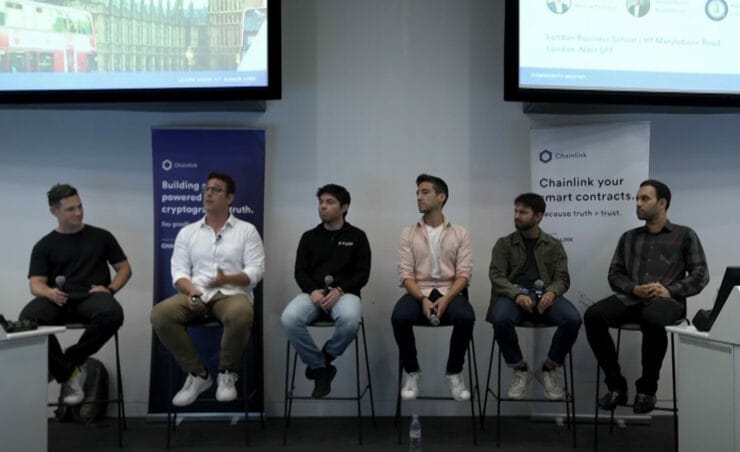During a recent Chainlink meetup at the London Business School, Chainlink Labs’ Halcyon Price moderated a discussion with successful web3 founders Stefan Rust of Truflation; Carlos Noe Saavedra of Fyde Treasury; Alex Matsuo of AWS Startup; Siddharth Shah of Motive Partners; and Abbas Kazmi of BlackWood Ventures. The conversation examined how builders, innovators, and entrepreneurs can thrive in today’s blockchain landscape.
Rust, whose brainchild, Truflation, is a decentralized U.S. inflation index that delivers its data on-chain via Chainlink, described crypto’s current challenges – fewer startups, less liquidity, and a shifting focus toward AI – as opportunities for serious builders.
“The tourists have left and so it’s now the new inhabitants and the immigrants that are now building new houses, new infrastructure to support this new ecosystem,” he said.
“I think the VCs that are staying, that are still deploying, they really understand space, they’re really value-add investors,” Saavedra agreed.
Kazmi believes the shift from “hype” projects toward blockchain infrastructure projects that have potential to intersect with other cutting-edge sectors like AI, legal tech, and fintech has amplified institutional and government interest in web3.
“More and more attention is being paid to the space, so I think it’s healthy overall what’s happening and it needed to happen,” he said.
Shah also praised the renewed focus on building blockchain infrastructure that supports use cases with real-world utility.
“People are actually building and doing things to push the space forward rather than just piggybacking on the latest hype train,” he said.
Considering advice they would give students and up-and-coming builders, the panelists agreed that relentless persistence is key.
“Sometimes you need to accept, as an innovator, being told that you’re wrong for a long time,” Matsuo said.
What keeps enthusiasts building is the big picture belief in blockchain technology’s long-term potential to enable a more fair and transparent world through innovations like inflation-protected stablecoins, DAO governance, tokenized real-world assets, and fractionalized ownership.
Kazmi emphasized the web3 community’s strength is its shared vision.
“It’s very rare to find other industries that can compete in terms of the level of support, the level of vision,” he said. “A lot of people in the web3 space come across as evangelists, and some people think it’s too much, but actually it’s people who believe in the power of the community, decentralization, the ability for diverse people around the world to get involved as well, which is very refreshing.”
Watch the full panel discussion.


